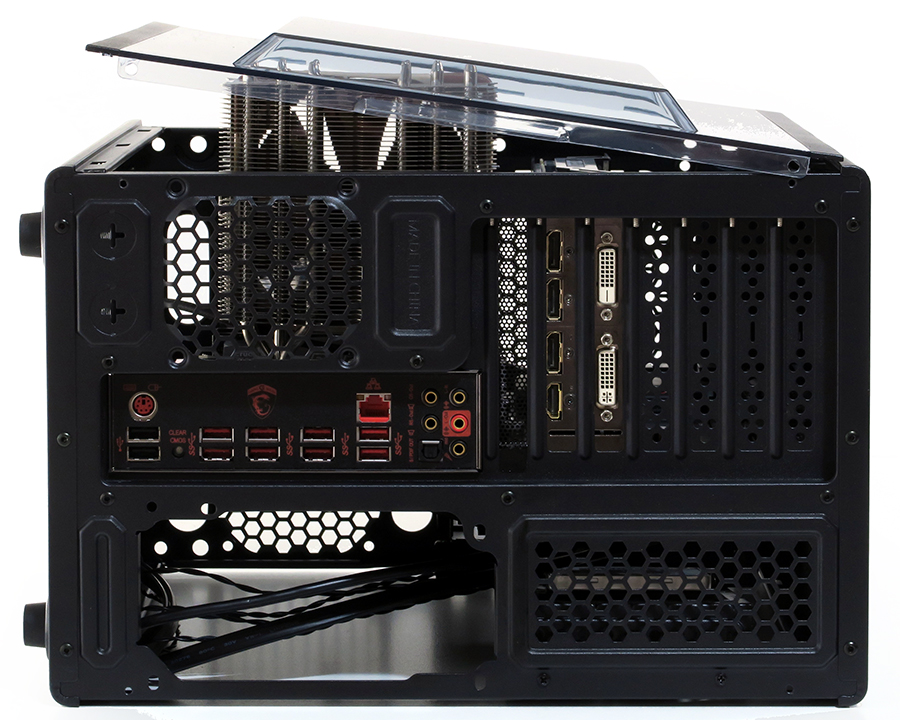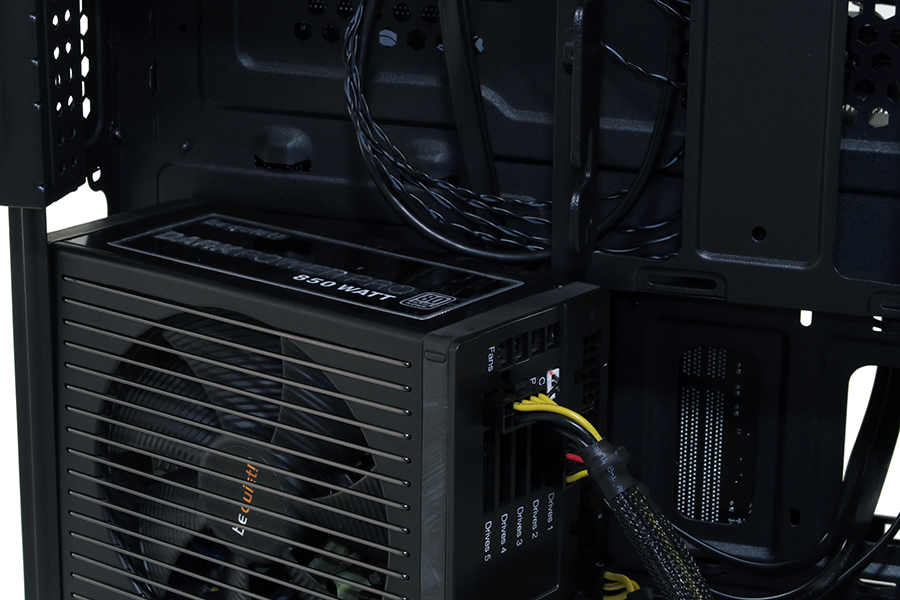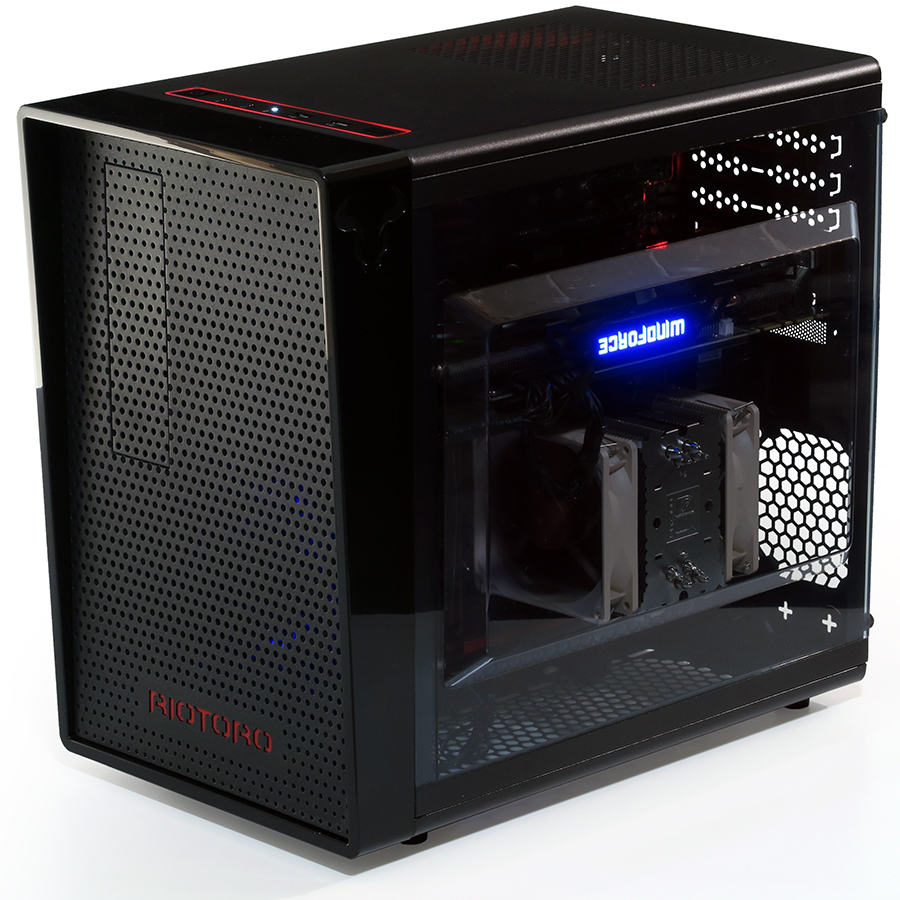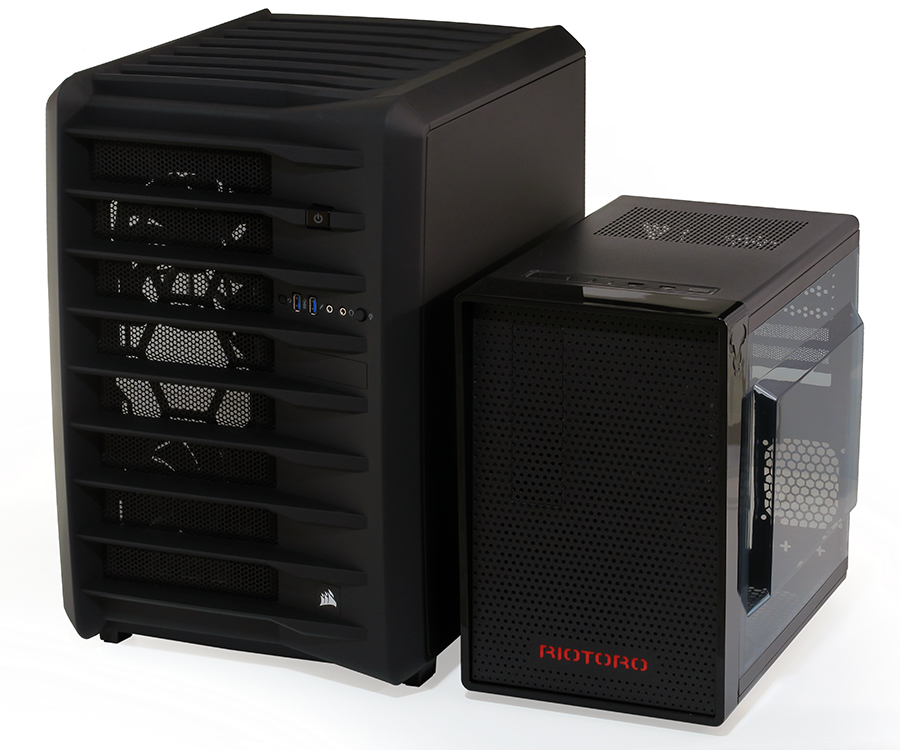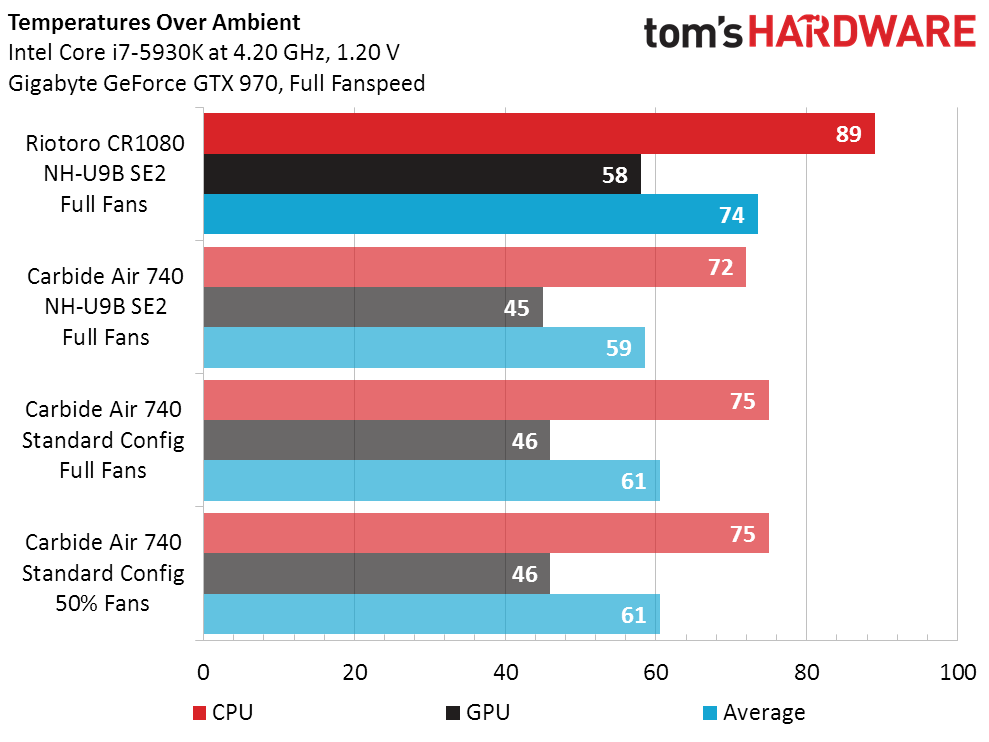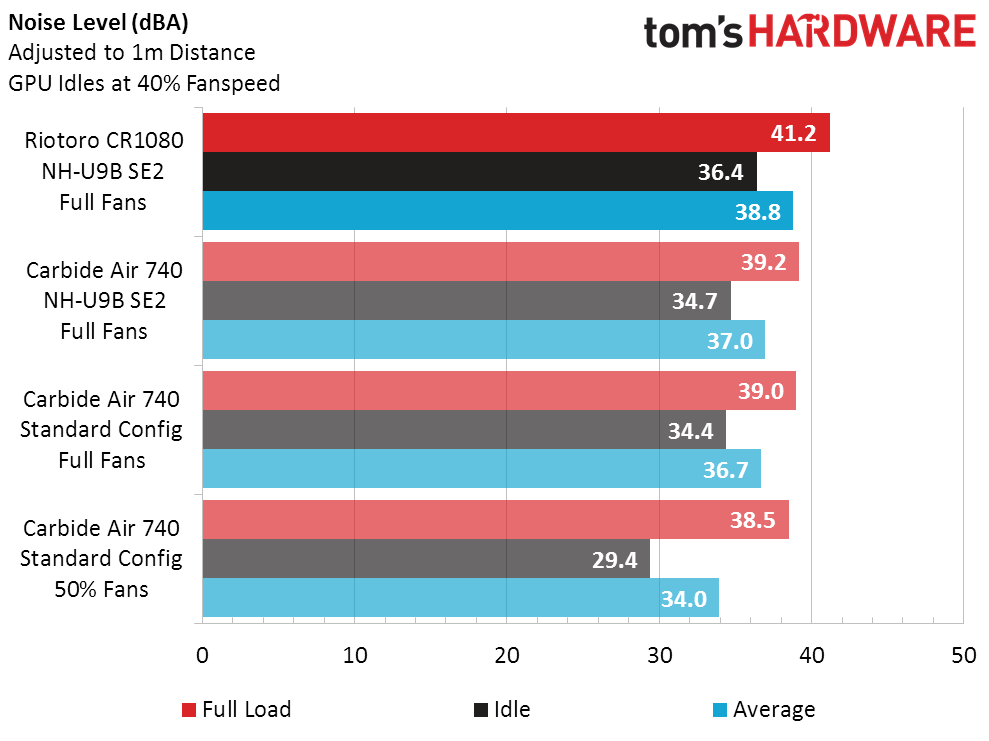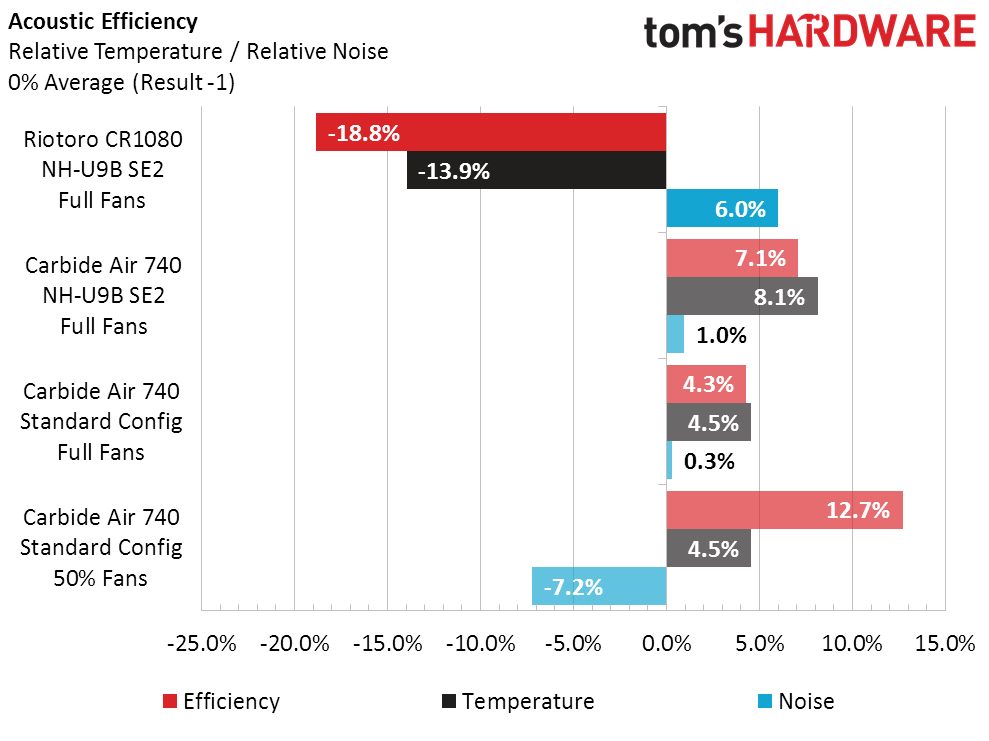Riotoro CR1080 Full ATX Mini Tower Case Review
Why you can trust Tom's Hardware
Building, Testing, And Final Analysis
Leaving a test platform in one piece reduces the chances that a variation might occur, such as thermal compound thickness, but the CR1080 didn’t have enough space to hold the cooler of our standardized test configuration. Although the side panel bubble extends max cooler height from 4.6” to 5.1”, the edge of that bubble overlaps any zero-offset 120mm cooler when used with our standardized test motherboard.
A 0.2” offset may have allowed the Be Quiet Dark Rock TF to fit, but its top-flow (downdraft) fan would have been too close to the CR1080’s side panel. With a cross-draft design that matches the CR1080’s intake fan orientation and a 5” height to match its side-panel squeeze, Noctua’s NH-U9B SE2 was recalled from last-year’s specialty cooler review.
With everything but the graphics card installed on the motherboard side, I attempted to install the power supply of our standard configuration only to find that it wouldn’t clear the 5.25” bay. This is the same fitment issue that forced HP to develop the PS/3 (reduced-depth PS/2) power supply form factor for its 1990s Pavilion mini-towers.
The Be Quiet DarkPower Pro 850 is exceptionally long for its rated capacity though, and the CR1080 does provide around 7.3” of power supply clearance behind the drive bay. Less, of course, if you’re adding one of those extra-deep 1990s optical drives. I switched to one of our previous standardized platform units, the AX860i from Corsair.
Over and inch longer than Nvidia’s standard GTX 980, Gigabyte’s 11.77” GV-N970G1 GAMING-4GD is only 0.07” too long to fit behind the CR1080s intake fan. Relocating the CR1080’s intake fan to an adjacent, lower mount resolves the conflict while maintaining its original flow direction. Gravity straightens this graphics card’s slightly twisted frame within the CR1080’s upside-down design.
It may not look like an expensive case, but the CR1080 certainly looks like it was designed to hold these high-end parts. Builders looking to squeeze maximum performance into this case could include up to three standard-length (10.5”) GTX 1080s in SLI and a closed-loop CPU cooler with 2x 120mm (1”) radiator.
Changing the CPU cooler and power supply means disregarding all of our previous review data, or at least putting it in perspective. To gain that perspective, I put its more-compact hardware into the one case that best matched its layout, the Carbide Air 740.
Get Tom's Hardware's best news and in-depth reviews, straight to your inbox.
In spite of Corsair’s insistence that the Carbide Air 740 is enormous, it’s actually mid-tower height. And Riotoro labels the CR1080 a mid-tower, while also promoting its compact dimensions. Both have less depth than most standard towers, both have the power supply and drive trays hidden behind the motherboard tray, and both could potentially produce similar airflow if equipped with similar case fans. Since the cases weren’t equipped similarly, we’re going to use both sets of Carbide Air 740 data to discuss how CR1080 performance compares to gaming cases tested in our standardized configuration.
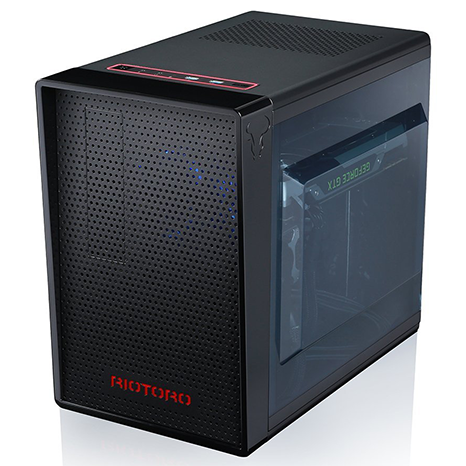
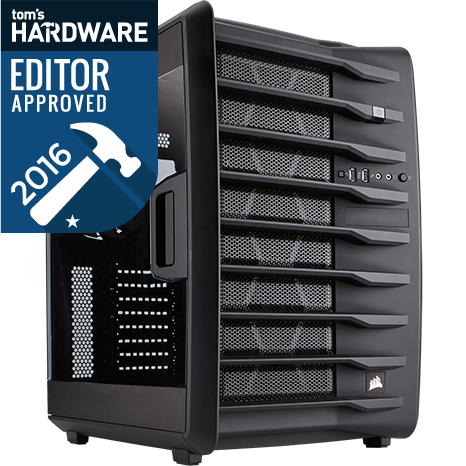
Test Results
The CR1080 was tested first, and our initial impression was that the smaller CPU cooler required to fit its narrower dimensions must be underperforming, in spite of its dual-fan design. Yet the change in CPU cooling doesn’t justify the case’s higher GPU temperatures, while the presence of only a single case fan could account for both.
Placing the abbreviated parts into the Carbide Air 740, the shorter twin-fan CPU cooler produced better temperatures. Also, since these are above ambient temperatures, there wasn’t any thermal headroom to test the CR1080 at lower fan settings.
Noise is the most likely reason Noctua’s NH-U9B SE2 doesn’t get more attention than its taller single-fan siblings, yet its deficits are minimized when placed into a case that has its own noisy fans, such as the Carbide Air 740. And here’s where that discussion of other cases gains significance.
At full fan speed, the Carbide Air 740 was already the second noisiest case in this review series, falling only one decibel below the Azza GT1 Full Tower’s annoyingly-pitched whine. Replacing the single-fan NH-U12S with the dual-fan NH-U9B SE2 pushed its noise level up by only 0.2 decibels. The CR1080 is even louder than the GT1, albeit at a less obtrusive octave, and even a 0.2 decibel offset wouldn’t suffice to hide that small deficiency.
Even though it’s slightly noisier than most cases, heat is the larger contributor to the CR1080’s low temperature-to-noise ratio.
Value is primarily in the eye of the buyer, as the CR1080 and Carbide Air 740 target different markets in spite of layout similarities. Buyers are accustomed to getting more performance per dollar at the lower portions of the mainstream-gaming segment, where cases like the MasterBox 5 and Z9 Neo compete.
We see that the noisy but highly-cooled Carbide Air 740 actually improves in value when paired with the noisier but slightly cooler NH-U9B SE2, which we brought out to fit the CR1080’s tighter confines. Yet even though it had a more-powerful CPU cooler, the CR1080 produced higher temperatures than we saw in the MasterBox 5 or Z9 Neo reviews. The CR1080 is also a few decibels noisier, where the change in cooler results in a difference of less than one decibel. Even when tested with that more-powerful CPU cooler, the CR1080 is around 25% short of those competitors in overall performance, and 35% lower in value.
We could start looking around for up-market features to boost the CR1080’s perceived worth, such as its metal insert face panel. Unfortunately, that insert is made from painted steel sheet which is hard to visually differentiate from hard plastic. A switch in insert material, texture, or color could boost the case's appearance of worth, but that's just marketing. For our value analysis, performance shortfalls (that could be addressed with a change in fans) take priority.
The CR1080’s side-by-side design puts full ATX components within the mini-tower dimensions of certain (large) Mini ITX cases, such as the Cubitek Mini Tank I used for my office PC. Because of that, the best plan I can think of for Riotoro is to market it to boutique builders, minus the side-window bulge, as a specific solution for a compact, liquid-cooled, full-ATX gaming PC. I might even build one myself if given enough encouragement from readers. Yet without at least a fan upgrade, the CR1080 becomes just another great concept that didn’t deliver on its potential.
MORE: Best Cases
MORE: All Case Content
MORE: In Pictures: 40 Unusual Computer Case Mods
Follow us on Facebook, Google+, RSS, Twitter and YouTube.
- 1
- 2
Current page: Building, Testing, And Final Analysis
Prev Page Re-Introducing The Full ATX Mini Tower-
thundervore They need to go back to the drawing board. ATX with only 2 front USB ports and terrible dust filters? No thank you.Reply -
Virtual_Singularity Garbàge. Like looking at an end product of a couple of former employees from a bigger case manufacturer who went off on their own, figuring, "hey, we can start our own company and market the same crap that passes for computer cases these days ourselves". O wait...Reply -
The_Assimilator This case is obviously designed with liquid cooling in mind (it even ships with radiator screws for Chrissakes), so why would you test it without a LCS? Just so you can complain that there isn't enough room for a standard tower cooler and that the thermal performance is bad?Reply
That doesn't mean the CR1080 is perfect - it makes zero sense to allow full ATX motherboards while restricting the length of graphics cards, not providing for 280mm radiators is a glaring oversight, there's a distinct lack of dust filters, and having to remove the motherboard to mount/unmount an SSD is just plain stupid - but at least it's an attempt at something slightly different in a chassis market that seems to think that adding LEDs and PSU shrouds to a design that hasn't changed for half a decade, is somehow innovative. -
Crashman Reply
Unlike some sites, I actually compare the performance of one case to another. We have a specific full ATX test system configuration that fits every full ATX case we've tested except this one, so that we can compare data between all those cases. It may be updated soon, but it won't be updated specifically for this case.18714306 said:This case is obviously designed with liquid cooling in mind (it even ships with radiator screws for Chrissakes), so why would you test it without a LCS? Just so you can complain that there isn't enough room for a standard tower cooler and that the thermal performance is bad?
The air cooler works well for determining case airflow. This case has very little airflow because it has very little room for a very little fan that's not even included on the back panel. A slim liquid cooler would be fine on the front panel, but mounting one of an ideal size (2x 120mm) would not allow the graphics card to fit. So one solution creates another problem and then we're stuck building a machine to fit the case.
And so it's recommended for people who don't mind building a machine to fit the case. It is, after all, nice for some people to have the flexibility to put a full tower motherboard in a mini-tower case.
